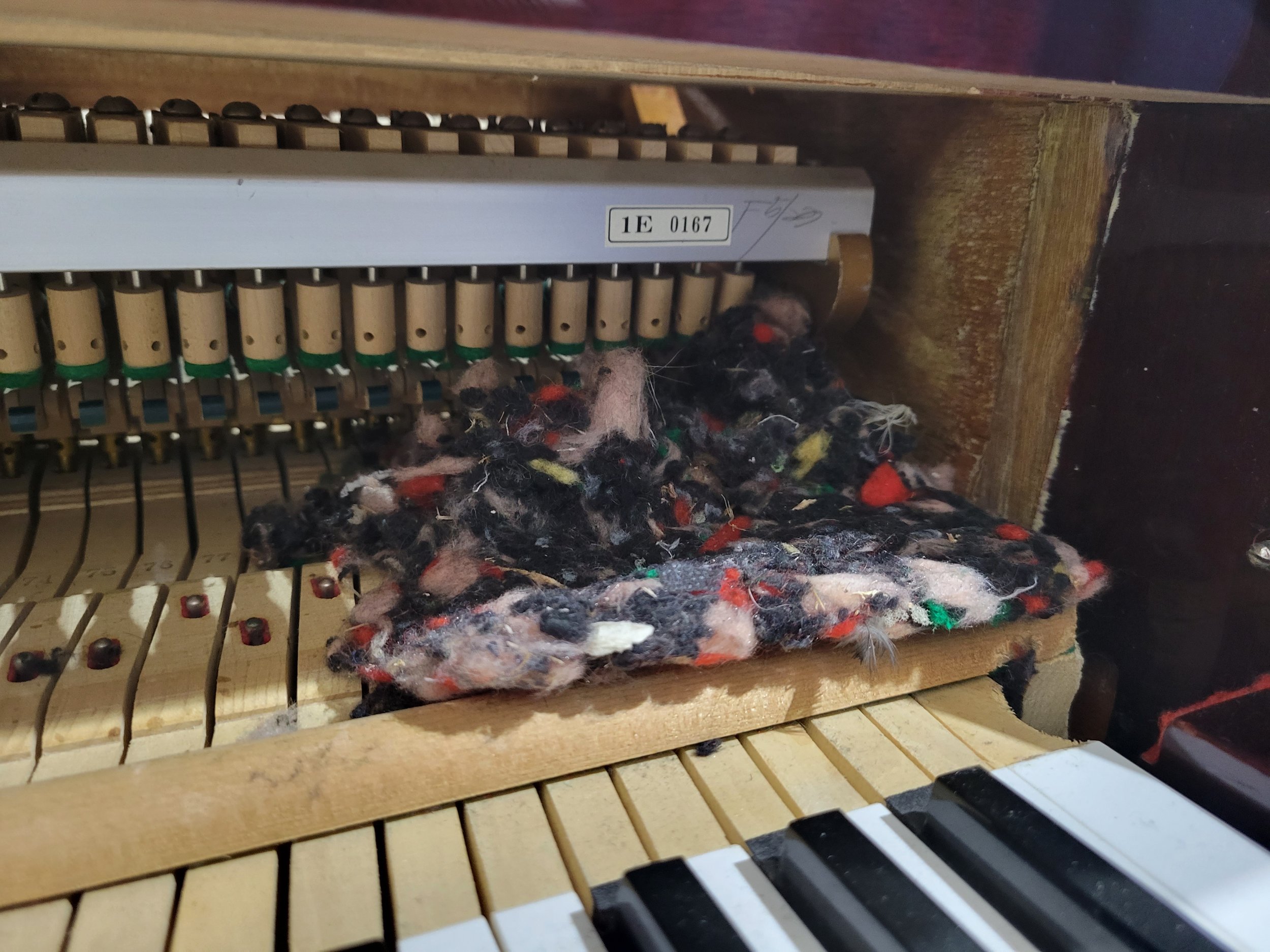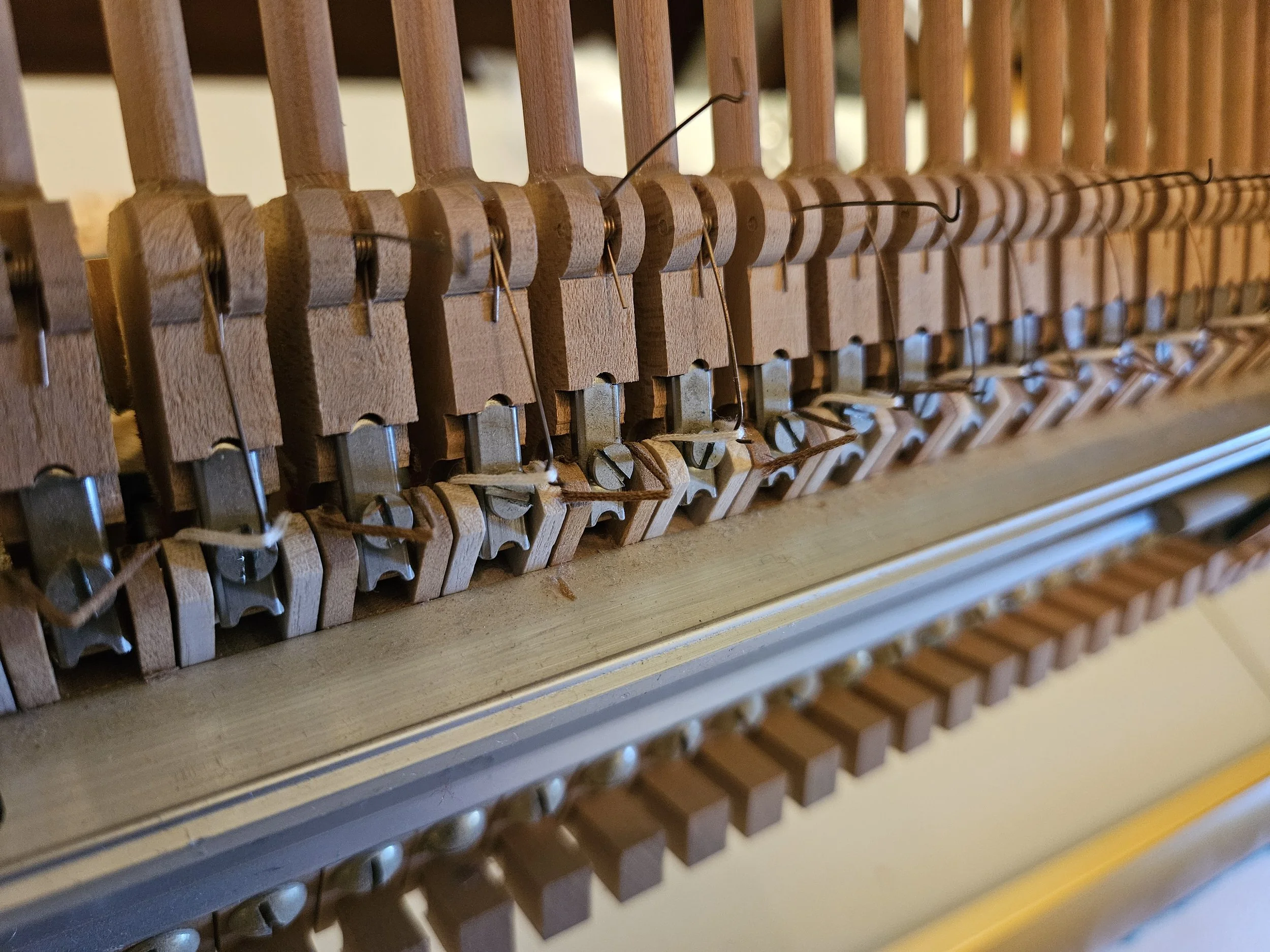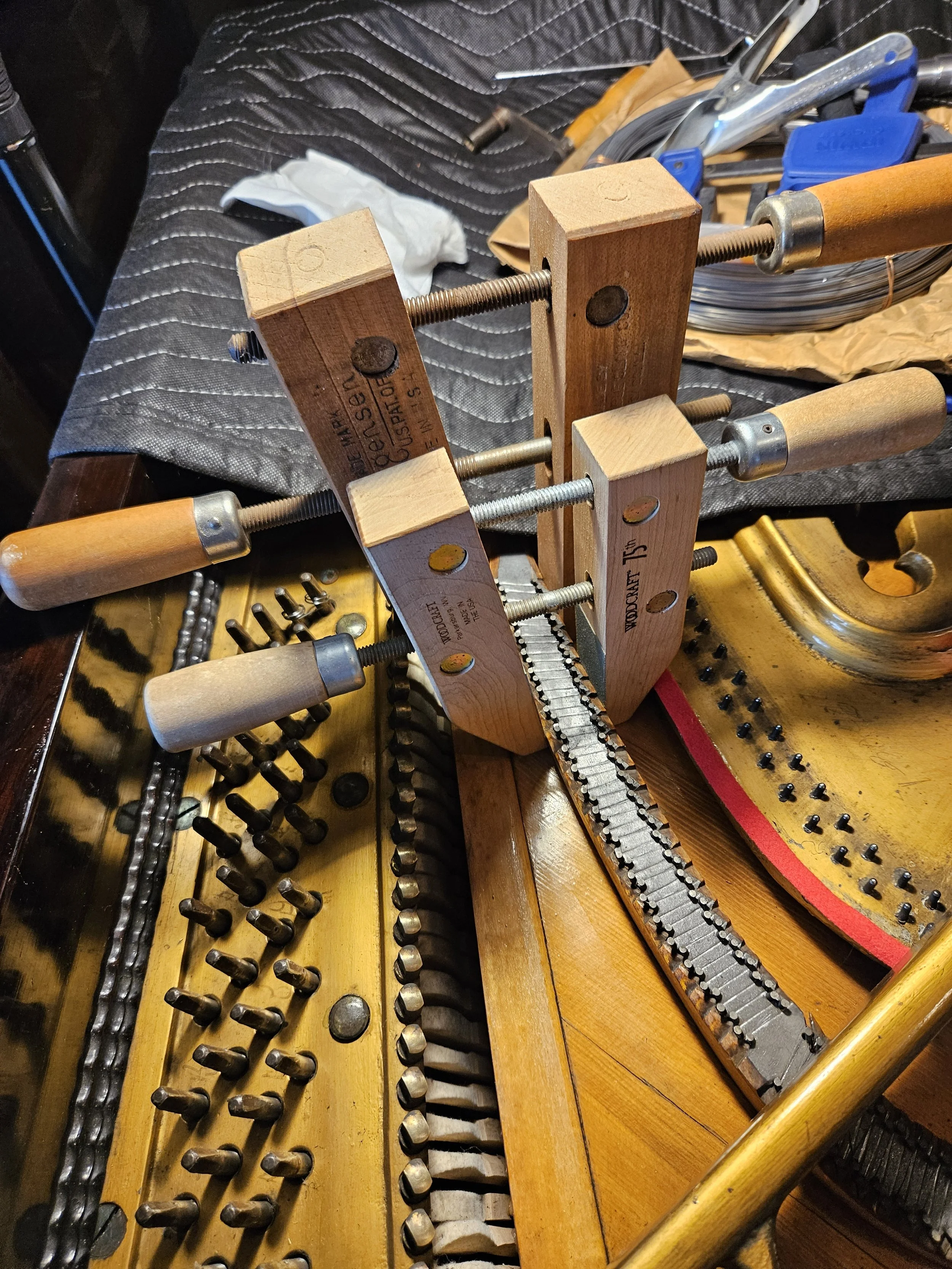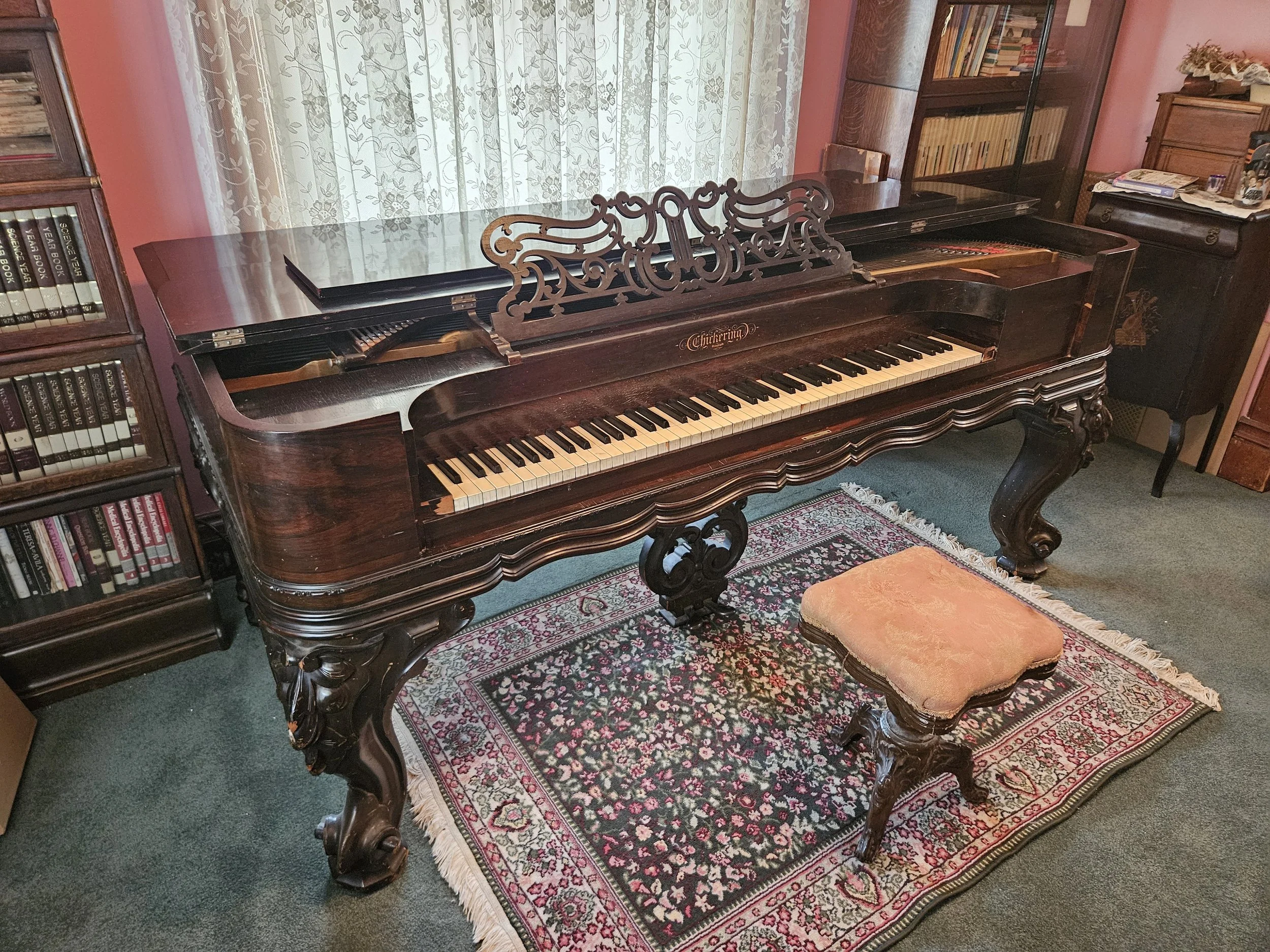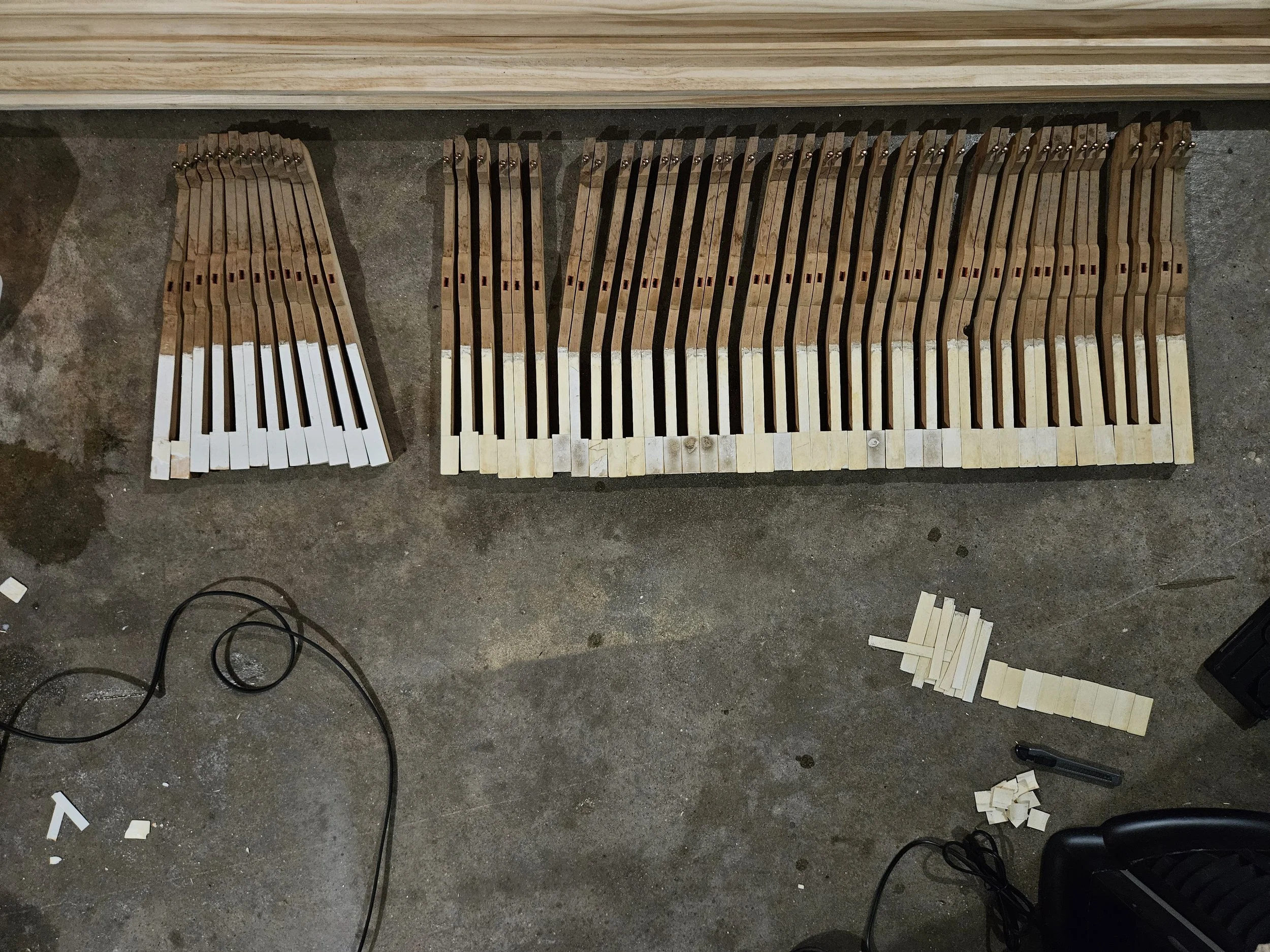Gallery
Examples of my work
-
![]()
Tuning the Baldwin D concert grand piano at Pontiac High School.
-
![]()
A church’s Steinway & Sons model B.
-
![]()
A gorgeous Steinway & Sons model B from the 1890’s.
-
![]()
A customer’s Yamaha C5, which used to belong to Chick Corea.
-
![]()
A Decker Bros grand from the 1870s. This one had its action rebuilt and case refinished prior to my coming upon it, but it needed further action work.
-
![]()
The Decker Bros action out of the piano. The action centers, also known as the center pins, are the points of rotation on the action parts. They needed to be replaced to the proper size, as some were either too loose or too stiff.
-
![]()
Oh, rats!
-
![]()
This reminds me of the nursery rhyme about the old lady who swallowed a cat to catch the bird, the bird to catch the spider, the spider to catch the fly… “The piano swallowed the snake to catch the mouse, but I don’t know why it swallowed the mouse. Perhaps it’ll die.”
-
![]()
With many Yamaha upright pianos from the 70s into the 90s, they have an issue that causes what’s called a “hammer return spring” to come undone. In the picture, there’s a brown cord near the bottom that the spring should be looped onto. These brown cords are a common failure point, and this leads to a lack in repetition and follow-up power.
-
![]()
Spending about half of a day to replace all of the parts that use the Yamaha cords is a worthwhile job if you wish to get the most out of your playing experience.
-
![]()
Alternating between replaced cords and old cords makes the difference more obvious visually.
-
![]()
An old Chickering & Sons square grand is an unusual sight, but they became popular around the latter half of the 19th century (only to fall out of favor before the 20th century began). This one needed a good cleaning and a restring in order to become tunable again.
-
![]()
With the strings off, a bridge repair needed to be made. A significant crack was preventing any real tone from being made in the top two octaves. With the help of some CA glue and clamps, I was able to restore some stability and clarity to the top end.
-
![]()
In the midst of the restringing project. You can see that I’ve got the bass strings still attached to their tuning pins and set aside. In this case, neither the budget nor the piano’s needs called for replacing the bass strings.
-
![]()
All finished! The soundboard and cast iron plate cleaned up quite well, and replacing the crusty old stringing felt will do a great job of muting sections of the strings that aren’t supposed to ring. Plus, it adds a nice pop of color.
-
![]()
One final shot of the square grand. The case may be old and a bit beat up, but the woodworking is undeniably gorgeous.
-
![]()
Are some of your keytops starting to come undone? Are they chipped, yellowed, or just unpleasant to play on? You can always have them recovered! Whether it’s having one or two keys replaced or a whole set, the options are there to bring you what you want. This was for a Schiller upright.
-
![]()
The completed set!
-
![]()
A closer look at the new keytops of the Schiller upright. The sharps (black keys) are original and untouched, outside of a quick cleaning.
-
![]()
Are your brass parts not shining quite like they used to? These are pedals to my personal Baldwin model E grand from 1929. It has been my project for the past few years, and shining up the brass is always rewarding.








